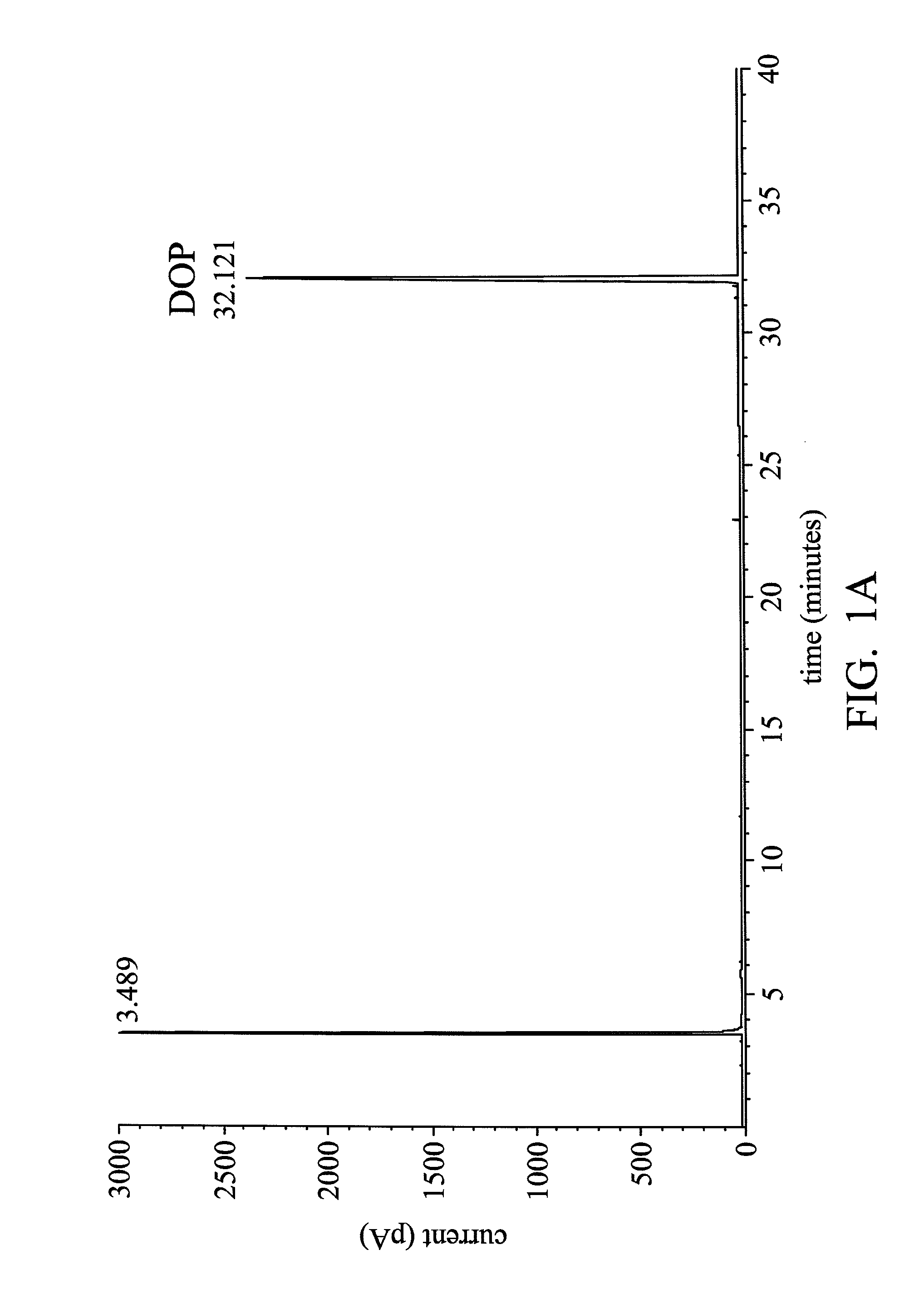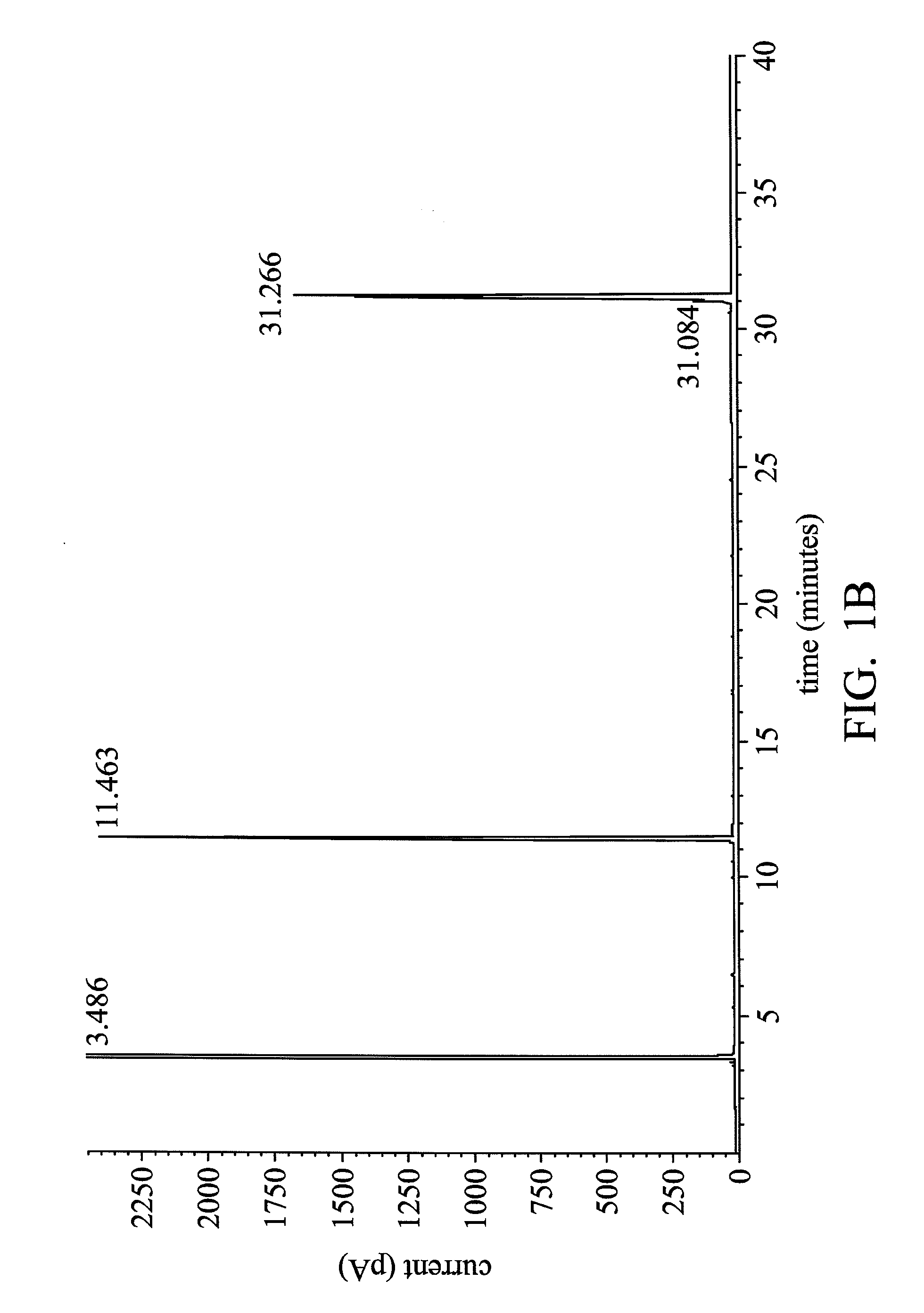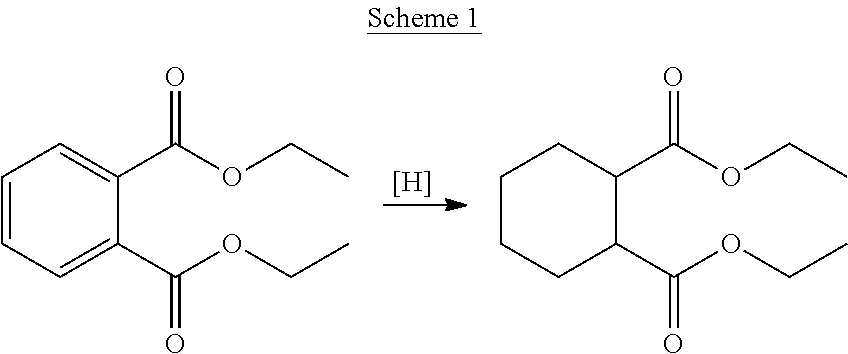Process for hydrogenation of polycarboxylic acids or derivatives therof
a technology of polycarboxylic acids and hydrogenation processes, applied in the direction of catalyst activation/preparation, physical/chemical process catalysts, metal/metal-oxide/metal-hydroxide catalysts, etc., can solve the problems of high fabrication cost, adversely affecting human beings and the environment, and high equipment cost of the hydrogenation process
- Summary
- Abstract
- Description
- Claims
- Application Information
AI Technical Summary
Benefits of technology
Problems solved by technology
Method used
Image
Examples
fabrication example 1
Fabrication of Catalyst A
[0032]100 g of activated aluminum oxide, 30 g of the calcium oxide were added in 200 ml of de-ionized water to form a slurry. The slurry was stirred for 1 hour and then dried at 120° C., and then calcined at 450° C. for 6 hours to form a powder.
[0033]50 g of the power obtained by the above step and 50 ml of the palladium chloride solution (PdCl2) containing 0.35 g of palladium were mixed and then dried at 120° C. The dried powder was molded to obtain the uniform particles with 20-30 mesh size. Then, the molded particles were calcined at 450° C. for 4 hours to obtain the catalyst A.
[0034]Before performing a hydrogenation process, the catalyst A was filled into a reaction column and then was pretreated in a hydrogen atmosphere for 4 hours.
fabrication example 2
Fabrication of Catalyst B
[0035]140 g of magnesium nitrate (Mg(NO3)2.6H2O), and 155 g of the aluminum nitrate (Al(NO3)3.9H2O) were dissolved in 2000 ml of de-ionized water to form a solution. The sodium hydroxide (NaOH) and sodium carbonate (Na2CO3) with a weight ratio of 70:130 were dissolved in 1100 ml of de-ionized water to from a base solution. The base solution was added into the solution and stirred at 60-80° C. The mixed solution was filtered to obtain a filter cake. The filter cake was washed by water and then dried at 110° C.
[0036]40 g of the power obtained by the above step and 50 ml of the palladium chloride solution (PdCl2) containing 0.4 g of palladium were mixed and then dried by heating. The dried powder was molded to obtain the uniform particles with 20-30 mesh size. Then, the molded particles were calcined at 450° C. for 4 hours to obtain the catalyst B.
[0037]Before performing a hydrogenation process, the catalyst B was filled into a reaction column and was pretreate...
fabrication example 3
Fabrication of Catalyst C
[0038]140 g of magnesium nitrate (Mg(NO3)2.6H2O), and 155 g of the aluminum nitrate (Al(NO3)3.9H2O) were dissolved in 2000 ml of de-ionized water to form a solution. The sodium hydroxide (NaOH) and sodium carbonate (Na2CO3) with a weight ratio of 70:130 were dissolved in 1100 ml of de-ionized water to from a base solution. The base solution was added into the solution and stirred at 60-80° C. Then, 100 g of aluminum oxide was added into the mixed solution and stirred for 1 hour. The mixed solution was filtered to obtain a filter cake. The filter cake was washed by water and then dried at 110° C.
[0039]100 g of the power obtained by the above step, 20 g of the forming agent and adhesion agent were mixed and molded to form a support with a cylindrical shape. The molded support was calcined at 450° C. for 4 hours.
[0040]Next, the 100 g of cylindrical support and 200 ml of palladium chloride solution (PdCl2) containing 1 g of palladium were mixed and then dried. T...
PUM
| Property | Measurement | Unit |
|---|---|---|
| Temperature | aaaaa | aaaaa |
| Percent by mass | aaaaa | aaaaa |
| Weight | aaaaa | aaaaa |
Abstract
Description
Claims
Application Information
 Login to View More
Login to View More - R&D
- Intellectual Property
- Life Sciences
- Materials
- Tech Scout
- Unparalleled Data Quality
- Higher Quality Content
- 60% Fewer Hallucinations
Browse by: Latest US Patents, China's latest patents, Technical Efficacy Thesaurus, Application Domain, Technology Topic, Popular Technical Reports.
© 2025 PatSnap. All rights reserved.Legal|Privacy policy|Modern Slavery Act Transparency Statement|Sitemap|About US| Contact US: help@patsnap.com



